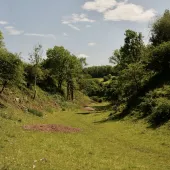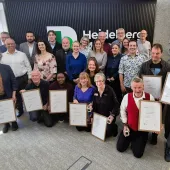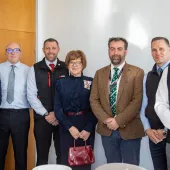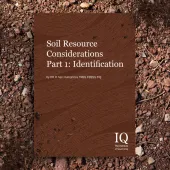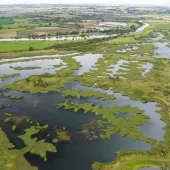Ensuring Restored Quarries Meet the UK's Biodiversity Requirements
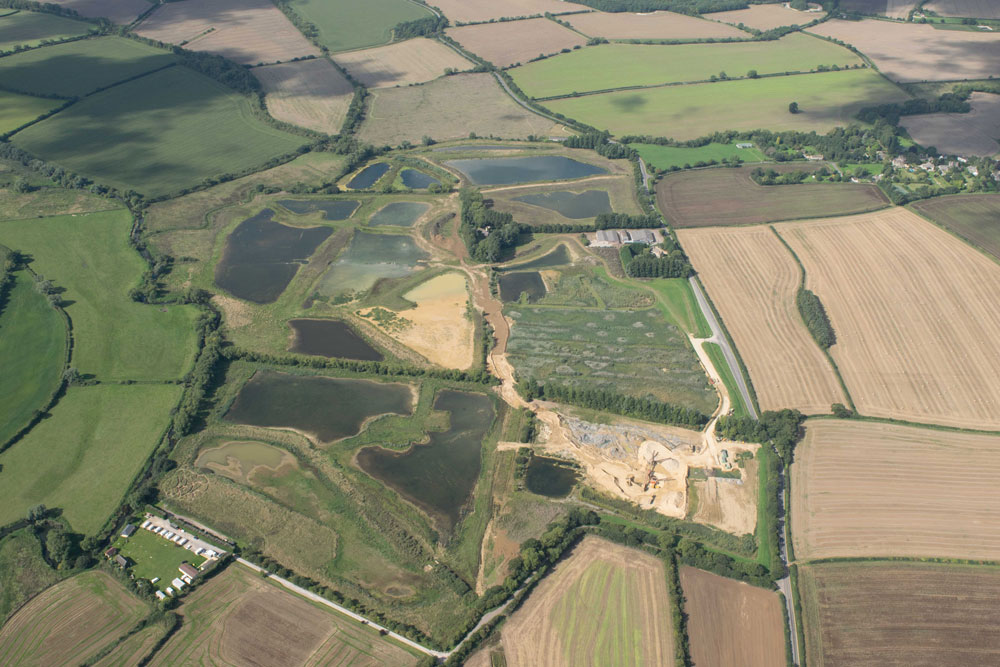
First published in the August 2017 issue of Quarry Management as Above and Beyond…
Strategies to ensure quarry restoration schemes meet the UK’s biodiversity requirements and future-proof extraction business models in a finite industry
By Moreton Cullimore, managing director of The Cullimore Group
As those of us who have been around in this industry understand, quarry management is heavily regulated and that includes strict guidelines especially around aspects such as the restoration process. The truth of the matter is that the extraction of minerals from a quarry is only ever a temporary land use. Therefore, it is vital that operators have a vision of what the site will look like in the future beyond the extraction phase.
The restoration phase is a key part of the quarrying process, requiring decisions to be made and agreed upon during the quarry application stage. As operators, we need to be able to look far into the future in order to decide what path the land/property is to take, long before any machinery is brought to the site. In many cases, restoration involves returning the land to its original use. However, this is not always feasible or desirable. Through creative restoration planning, mineral extraction offers the opportunity to not only improve the environment in and around quarry sites, but also to potentially create new land uses. This notion of potential use points the way to strategies for quarry operators large and small to future-proof their business models. That is not just looking at the financial returns, but, importantly, the stewardship of land, habitat and communities too. Nowadays, any business that consigns CSR (corporate social responsibility) to the ‘nice to have’ file is heading for a fall, because buy-in of stakeholders can make or break a land deal, from irate neighbours to unsupportive councils to name just a few.
The restoration process
The type of restoration required will depend upon a variety of factors including what the desired land use or after-use is, as well as the type of mineral that has been quarried. For example, the site could be restored for a variety of purposes, including:
- An agricultural or wildlife setting
- Habitat or wetland creation
- Social amenities
- Combined wildlife and social amenities
- Housing
- Leisure and recreation
- Flood storage
- Business or commercial properties.
As a part of this restoration, The Cullimore Group, who are based in Gloucestershire but with a footprint across the Cotswolds and West of England, not only understand the process, but also consistently go above and beyond the stated requirements by restoring every piece of land to an even better state. This falls in line with the increasingly stringent requirements around sites, whereby quarry management companies are being encouraged to be more sustainable both during quarrying and after quarrying has finished. In addition, organizations are expected to restore or improve the site after they have extracted the rocks or minerals, not only to the benefit of future users, but also for the surrounding communities. To ensure this happens, measures are consistently added to and implemented to allow this to take place in a more sustainable way.
The fact of the matter is that organizations must have an environmental conscience when restoring sites, because this is what is demanded by the wide variety of stakeholders that are often involved. Although, at first, it might seem counter-intuitive, The Cullimore Group have included housing development as an important part of land restitution – thereby utilizing brownfield sites rather than encroaching untouched Green Belt land.
Overall, the restoration of any site is a complicated process with a multitude of hoops to jump through, and these are increasing year on year. Each site requires a tailor-made plan of its own completed at the beginning of the process, often nothing like anything completed previously. Not only this, the aftercare plans are strictly regulated, meaning organizations have to meet stringent requirements. This necessitates a deep understanding of every piece of legislation, alongside excellent communication links with communities and local stakeholders, in order to come together with an end product that fits every need. This is why organizations such as The Cullimore Group always go above and beyond the framework through listening to the needs of the local communities, in addition to the other concerned groups, in building the plan and framework.
Habitat and biodiversity creation
In recent years, biodiversity has become a heavily used word when discussing the restoration phase of a quarry. Quarries can be important sites for biodiversity because they can be created to support a diverse mix of habitats, wetlands and substrates that do not exist elsewhere. Exposed rock faces, nutrient-poor soils, a diverse range of available niches, and closeness to large areas of semi-natural habitat also contribute to the potential wildlife value of quarries.
In this day and age, an excellent knowledge of what is needed to create a biodiverse site is a must. This does not just mean understanding what the end result needs to be; it also means understanding what works well together and what it will take to make the site a long-term success. For example, adding shrubs to increase certain plant species or introducing particular plants, grasses, hedgerows and seeds to help particular animal or insect species to survive.
Taking this one step further, one of the main issues surrounding biodiversity within the restoration phase is to ensure that the species specified are sourced from appropriate locations, and that natural regeneration is encouraged wherever practicable. If seed or plants are required, then sufficient time and funding should be allocated for this approach. It is advised that collections should take place over a period of several years and perhaps be used to establish stock cultivation. The same applies if grassland, reed beds or wetlands are being introduced. Once again, all take time to come to fruition, not only due to the length of time they need to grow and cultivate, but also because of the building-up phase.
The Cullimore Group has considerable experience in the creation of reed beds. The company’s Roundhouse Farm site, for example, is in the latter stages of its restoration from sand and gravel extraction to predominantly reed bed, within which the new habitats and species are doing particularly well.
An extra consideration for quarrying companies is the consistent call for a trade-off between biodiversity needs and other community requirements, such as wetlands and reed beds as well as housing, community parks and centres, and leisure facilities. Bringing species to the UK that no longer exist or are rare can be done, but needs careful consideration as to how they will survive in the long term. Continuing the theme of land use, with the amount of new homes being built year on year (139,030 were built in the year to June 2016, with a larger number expected in 20171), woodlands and Green Belt areas are under growing pressure for development. In fact, there has become a worrying trend of increased proposals for house building on the Green Belt, rising from 81,000 new proposed houses in 2012 to 275,000 in 2016 to a huge 360,000 in 20172. The use quarrying sites for housing could be one way to protect essential Green Belt land and provide options for local authorities in their never-ending quest to find land.
Leisure and recreational facilities are another option. For example, The Cullimore Group are currently going through the application process ahead of developing a new cable ski for one of the UK’s fastest-growing sports – wakeboarding. The plan is to create the UK’s premier facility with the expectation that it will host both the UK and World Championships in the future. Alongside this, the Group will also plant extensive amounts of hedges, trees, reed beds and shallows to balance nature, biodiversity and recreation throughout the site.
As will be very clear by now, to implement any restoration approach successfully, careful planning, excellent co-ordination between each stakeholder and sticking to the agreed timelines are all essential ingredients. As many readers will understand, outline proposals for the restoration phase are usually developed many years before the quarrying is started. At this stage, it is essential that the ‘team’ of required partners and contractors come together to agree who needs to do what and when. For example, natural regeneration can work very well on gravel workings and where open water will be left, but is not so good if the ground is likely to remain bare or only sparsely vegetated. Alongside this, natural regeneration can be a very long process, which for many quarrying companies will be unacceptable. For a wetland- or grassland-based restoration, the objectives must be decided at an early stage, as these will dictate the species, methods and resources to be used. In addition, if a seedbed is required, it should be prepared in the autumn to allow the seeds to germinate. For an activity park or other community-based project, early decisions are needed so that the correct planning permissions can be sought ahead of the build itself. All of this takes time, something many people do not like, and in some cases, realize.
Quarry restoration valuable to communities
Despite the length of time the restoration phase takes, the end results benefit many stakeholders, including local councils, the communities that live close by, those that use the site and many more. In addition, quarry restoration can make a major contribution to achieving local council biodiversity targets. The truth is that after a quarry has been worked out, its next purpose in life can have a huge impact on the UK’s biodiversity needs. It is important that we recognize this, but at the same time do not restrict or slow down the evolution of the site.
References



